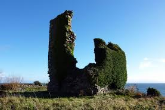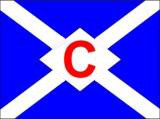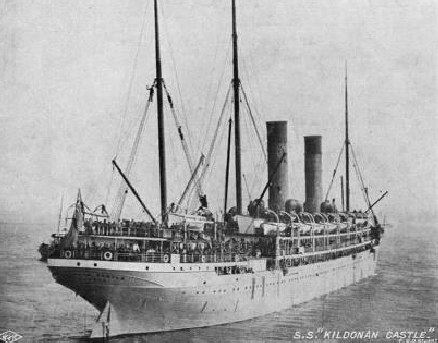

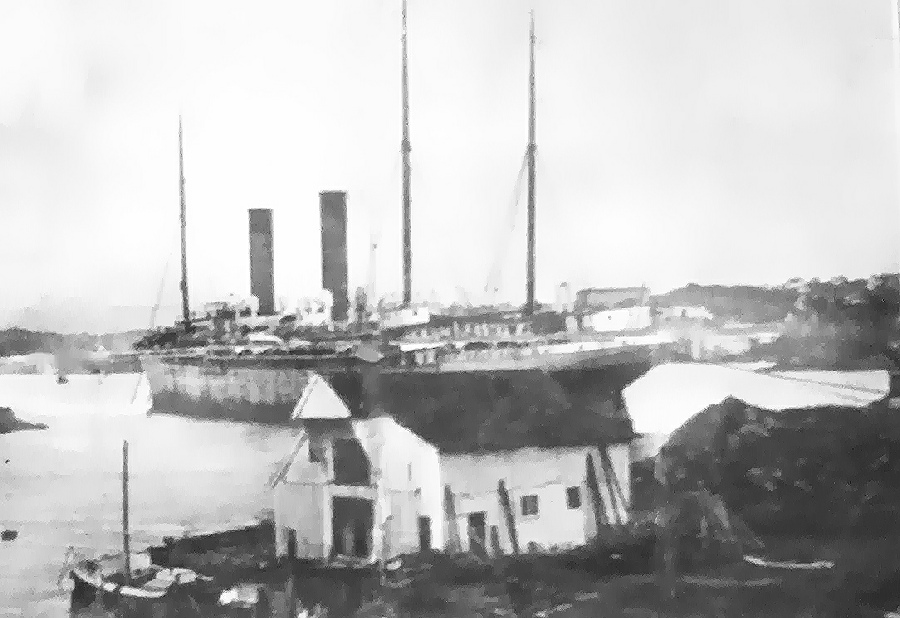
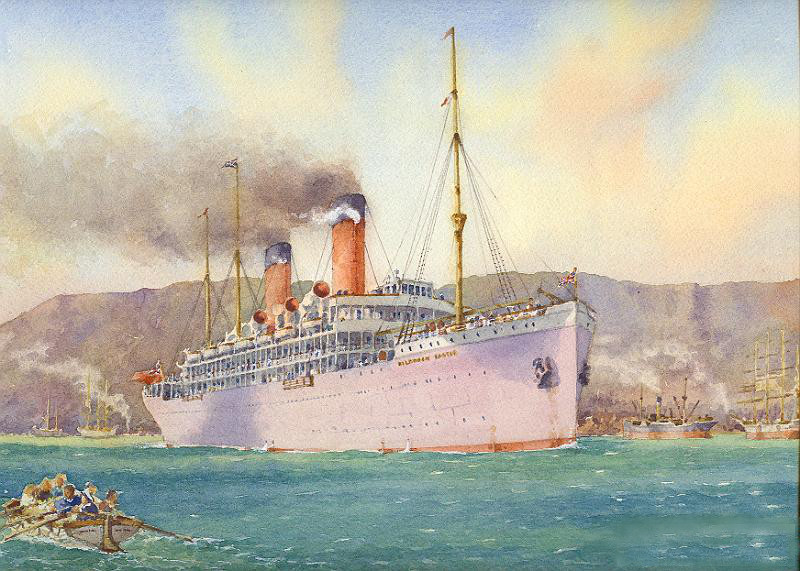
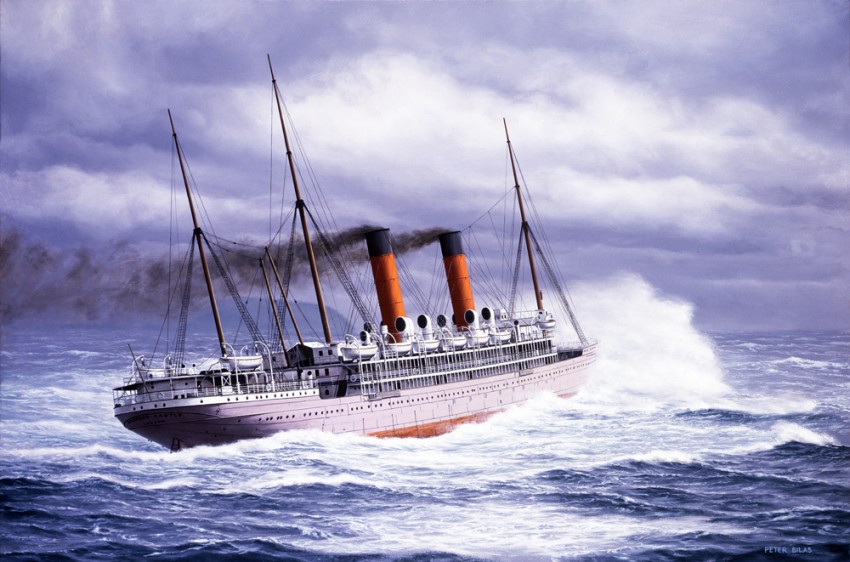
Regiment |
Sailed |
Arrived |
|
Northumberland Fusiliers - 2nd Battalion Welsh Regiment - 1st Battalion |
Early November from Southampton |
22 November at Cape Town |
|
Master |
From |
To |
|
J C Robinson |
12/1899 |
12/1901 |
|
R Rendall |
2/1902 |
11/1903 |
|
J Rose |
12/1903 |
5/1904 |
|
J Tyson |
7/1904 |
11/1909 |
|
R E Becher |
1/1906 |
4/1906 |
|
J L Stanistreet |
12/1907 |
2/1908 |
|
R E Becher |
4/1908 |
6/1908 |
|
J L Stanistreet |
11/1909 |
5/1910 |
|
F J Moseley |
6/1910 |
4/1911 |
|
J L Stanistreet |
5/1911 |
2/1912 |
|
F P Whitehead |
2/1912 |
5/1913 |
|
J W Hague |
5/1913 |
9/1913 |
|
W W Verall |
12/1913 |
2/1914 |
|
G W Armstrong |
2/1914 |
8/1914 |
|
Royal Navy AMC |
8/1914 |
1919 |
|
A Knight |
7/1919 |
8/1919 |
|
W W Verall |
8/1919 |
9/1919 |
|
G J Whitfield |
9/1919 |
10/1919 |
|
H Strong |
10/1919 |
9/1920 |
|
B Chave |
1/1922 |
8/1922 |
|
W F Stanley |
9/1922 |
8/1923 |
|
D Samuel |
9/1923 |
5/1924 |
|
T H Wilford |
6/1924 |
12/1925 |
|
C B Imlah |
12/1925 |
11/1926 |
|
Laid up |
11/1926 |
1/1927 |
|
J Attwood |
1/1927 |
4/1927 |
|
Laid up |
4/1927 |
3/1928 |
|
R G Shilston |
4/1928 |
6/1928 |
|
J H Kerby |
6/1928 |
10/1928 |
|
C R Jackson |
11/1928 |
1/1929 |
|
Laid up |
1/1929 |
10/1929 |
|
C E Aylen |
10/1929 |
11/1929 |
|
C le Brocq |
11/1929 |
12/1929 |
|
Laid up |
1/1930 |
3/1930 |
|
D Nicoll |
3/1930 |
5/1930 |
|
Laid up |
5/1930 |
5/1931 |
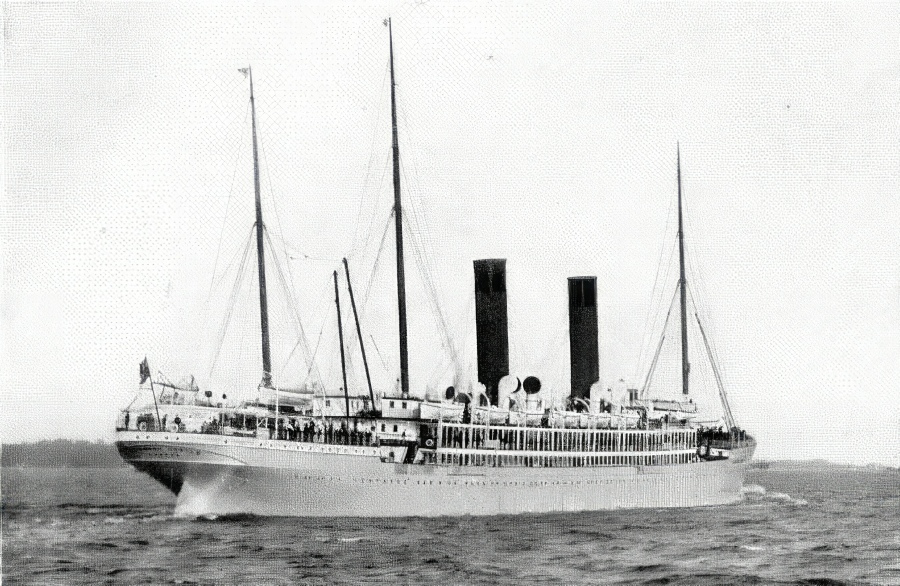
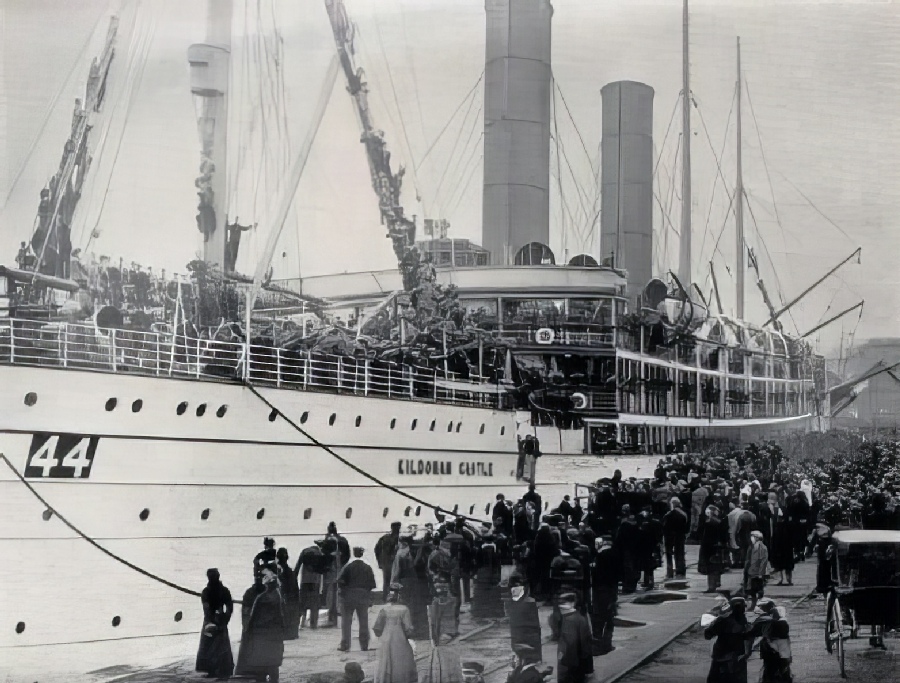
Vessel |
Built |
Tonnage |
Official No |
Ship Builder |
Engine Builder |
Engine Type |
HP |
Screws |
|
Kildonan Castle |
1899 |
9664 |
112615 |
Fairfield Glasgow |
Fairfield Glasgow |
2 x Quadruple Expansion Steam |
1663 NHP |
2 |
